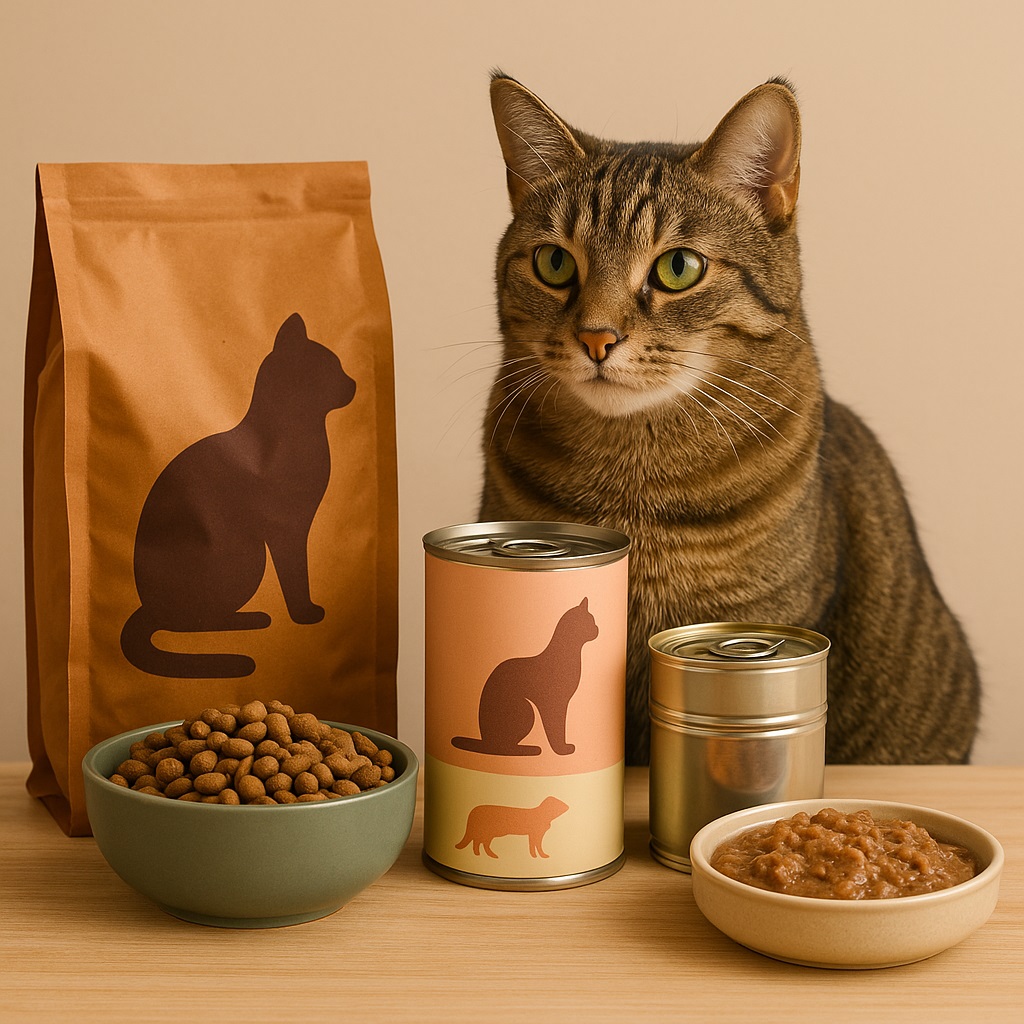What to Know Before Buying Cat Food: An Honest Review for Cat Parents

Cats are not just pets—they’re family. As devoted cat parents, choosing the right food for them can be as stressful as picking your own meals for the week. Whether you’re browsing shelves in-store or scrolling through options online, the sheer volume of choices—from dry kibble to gourmet-style wet meals—can leave you overwhelmed. This blog aims to make your decision easier by offering a well-rounded cat food review based on taste, texture, nutritional value, brand integrity, and real-world pet owner experiences. We’ll break down what to look for in both dry and wet varieties while offering practical guidance to help you identify the best choices without getting lost in the marketing jargon.
Understanding What Your Cat Really Needs
Every cat is unique. Some are energetic kittens with boundless curiosity, while others are senior lap-lovers who demand only the softest blankets and the tastiest meals. Regardless of age or personality, every feline requires a balanced diet rich in protein, essential fats, and vital nutrients. Unlike dogs, cats are obligate carnivores, meaning their diets must be high in animal protein to support their muscle tone, coat quality, and overall health.
A well-rounded meal for a cat typically includes:
- High-quality animal protein (like chicken, turkey, or fish)
- Taurine, an essential amino acid cats can’t produce on their own
- Omega-3 and Omega-6 fatty acids for healthy skin and a shiny coat
- Vitamins and minerals that support immune health, bone strength, and organ function
- Moisture—especially for cats that don’t drink enough water
Let’s dig deeper into how different types of food fulfill these requirements.
Dry Cat Food: Pros, Cons, and What We Found
Dry food is often the go-to for many cat owners due to its convenience and long shelf life. It’s easy to store, doesn’t require refrigeration after opening, and is ideal for free-feeding. It also tends to be more cost-effective compared to canned alternatives.
In our dry cat food review, we sampled a variety of top-rated kibble brands and evaluated them on palatability, nutritional value, ingredient sourcing, and how well they met feline health needs.
Many brands market themselves as grain-free, high-protein, or fortified with vitamins. While these labels may sound impressive, it’s essential to read the ingredient list carefully. A good formula lists animal protein as the first ingredient, with minimal fillers like corn or wheat. Ingredients like chicken meal or turkey meal are acceptable, but avoid vague descriptions such as “meat by-products.”
However, the downside of dry food is its low moisture content. Cats are naturally poor drinkers, and relying solely on dry kibble can lead to dehydration or urinary tract issues, especially in older cats or those with kidney concerns.
Wet Cat Food: More Than Just a Treat
Wet food, on the other hand, is often viewed as a luxury or a supplement. But it serves a vital function, particularly for hydration. A standard can of wet food contains up to 75% water, helping cats stay hydrated even if they don’t drink frequently.
Our wet cat food review showed that many brands have upped their game. Gone are the days of indistinguishable meat slurries. Today’s offerings include shredded chicken in broth, salmon pâté, or beef medley—all crafted to meet the dietary needs of felines while appealing to their taste buds.
Cats who are picky eaters or those with dental issues tend to prefer wet food. However, wet food is more expensive and less convenient. It must be stored properly after opening and often has a shorter shelf life.
If you’re aiming to create a balanced diet, many veterinarians recommend mixing both dry and wet food—offering the best of both worlds in terms of nutrition, cost-efficiency, and hydration.
Factors We Considered in Our Cat Food Evaluation
When conducting this comprehensive cat food review, we evaluated products based on five major factors:
- Ingredients & Nutritional Balance
Are the ingredients biologically appropriate for cats? Is the food free from artificial preservatives, colors, and fillers?
- Taste Test (Cat-Approved?)
We looked at how quickly cats approached their bowls, how much they ate, and whether they licked the bowl clean.
- Digestibility
Did the food lead to any digestive discomfort such as vomiting or diarrhea? Was the litter box situation improved or worsened?
- Packaging & Brand Transparency
Brands that clearly disclose sourcing, processing, and nutritional content received higher marks.
- Price-to-Value Ratio
While premium brands offer outstanding nutrition, budget-conscious cat parents need quality options that won’t break the bank.
How to Transition Your Cat to a New Food
Switching your cat’s food should be a gradual process. Sudden changes can upset their digestive system and cause your feline friend to reject the new food entirely. Follow this simple 7-day transition plan:
- Days 1–2: 25% new food + 75% old food
- Days 3–4: 50% new food + 50% old food
- Days 5–6: 75% new food + 25% old food
- Day 7 onward: 100% new food
This method helps your cat acclimate to the taste and reduces the chance of an upset stomach.
Special Diets and Sensitivities
If your cat has special health conditions like diabetes, urinary tract issues, or food allergies, your options become more specific. Limited-ingredient diets, prescription formulas, or hydrolyzed proteins may be necessary. Always consult with a vet before shifting to a specialized diet.
For example, urinary health formulas are low in magnesium and help maintain a neutral pH, which prevents stone formation. Diabetic cats may benefit from low-carbohydrate, high-protein foods to regulate blood sugar levels. Even hairball control foods exist, which include added fiber to help fur pass through the digestive system.
What Real Pet Parents Are Saying
We also factored in thousands of reviews from USA-based online pet stores and platforms like Kwik Pets, where pet parents regularly share insights about their experiences with different food types and brands. Consistency in quality, availability, and customer service also made a big impact on their purchasing decisions.
One consistent theme across reviews was how quickly cats “decided” whether a new brand was acceptable. Even the best formula can flop if your feline snubs it. Therefore, it’s advisable to buy smaller portions or sample packs before committing to a bulk order.
Best Practices for Storing Cat Food
Once you find a food your cat loves, storing it properly is crucial:
- Dry food: Keep in an airtight container away from heat and sunlight.
- Wet food: Refrigerate unused portions and use within 2–3 days.
- No plastic bowls: Use ceramic or stainless steel to prevent bacteria build-up and chin acne in cats.
Where to Buy Trusted Cat Food in the USA
While national chains and local pet stores carry major brands, shopping from trusted online retailers like Kwik Pets gives you access to seasonal discounts, a variety of niche options, auto-shipping for convenience, and verified reviews from fellow cat owners.
With the growth in demand for transparency and quality, many online platforms are now highlighting products with clearer labeling, certifications (like AAFCO compliance), and vet endorsements.
Final Thoughts
Choosing the right food for your cat is part science, part intuition, and part trial-and-error. No one food fits all, but armed with the right information and awareness of your cat’s unique preferences and health needs, you can make confident decisions that contribute to a long, healthy, and happy life for your feline friend.
Before making a switch or exploring new options, observe your cat’s behavior, coat, energy levels, and litter box output. These signs are often the most telling indicators of whether a particular food is working well or not.
FAQs
What’s the difference between dry and wet food for cats?
Dry food is low in moisture and more affordable, while wet food contains higher water content, aiding in hydration. Many cat parents choose to mix both for balanced nutrition.
How do I know if a cat food brand is good?
Look for real animal proteins listed first in the ingredients, avoid artificial additives, and check for AAFCO approval. Brand transparency, reviews, and vet endorsements also help guide your choice.
Can I switch my cat’s food overnight?
No, always transition gradually over 7 days to avoid digestive upset. Begin with small portions of the new food mixed with the old and increase slowly.
How do I store leftover wet food?
Keep it sealed in an airtight container in the fridge and use it within 2–3 days. Always serve at room temperature to appeal to your cat’s sense of smell.
Are there special foods for senior or indoor cats?
Yes, many brands offer formulas for different life stages or lifestyles. Senior formulas often include joint support, while indoor formulas manage hairballs and lower calorie content for less active cats.




